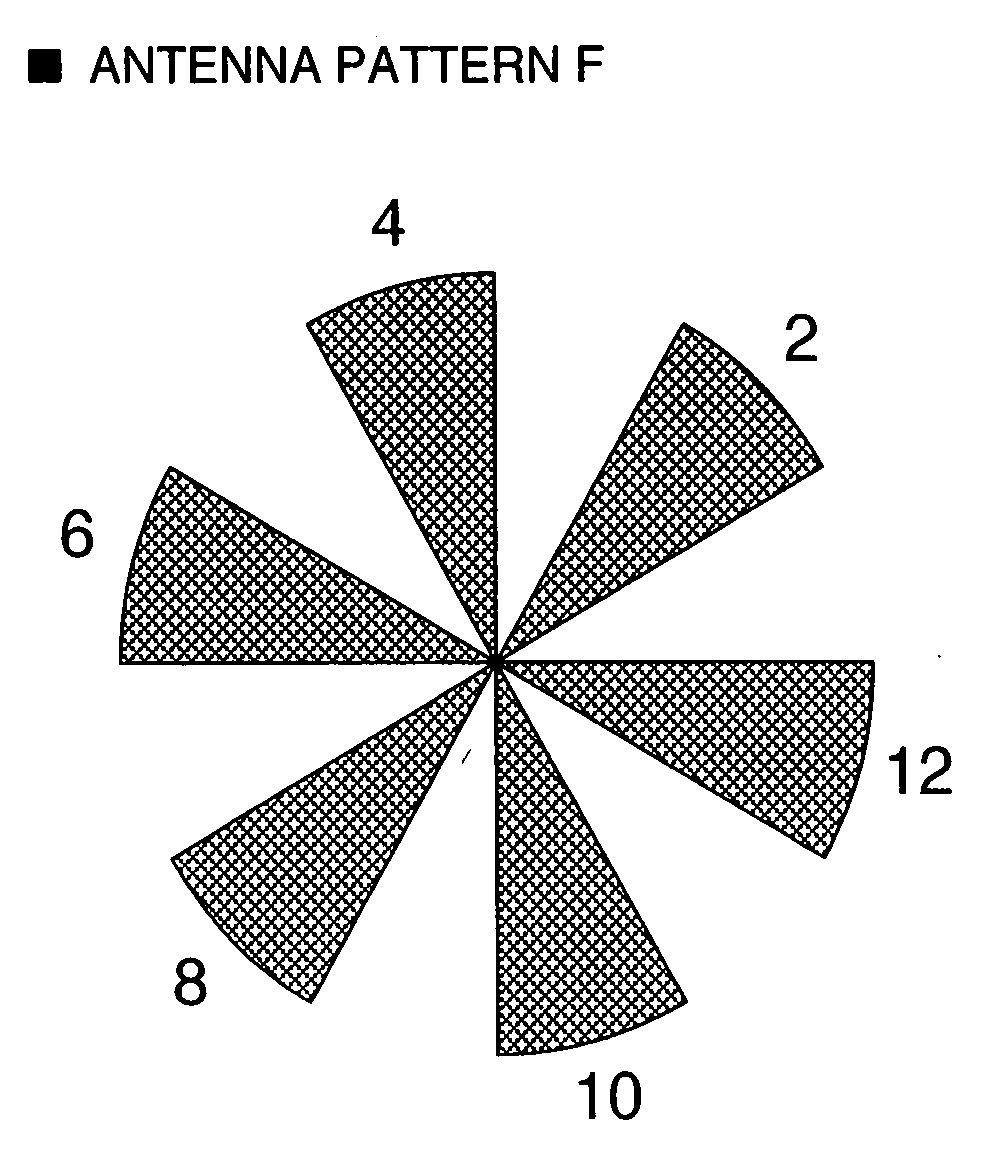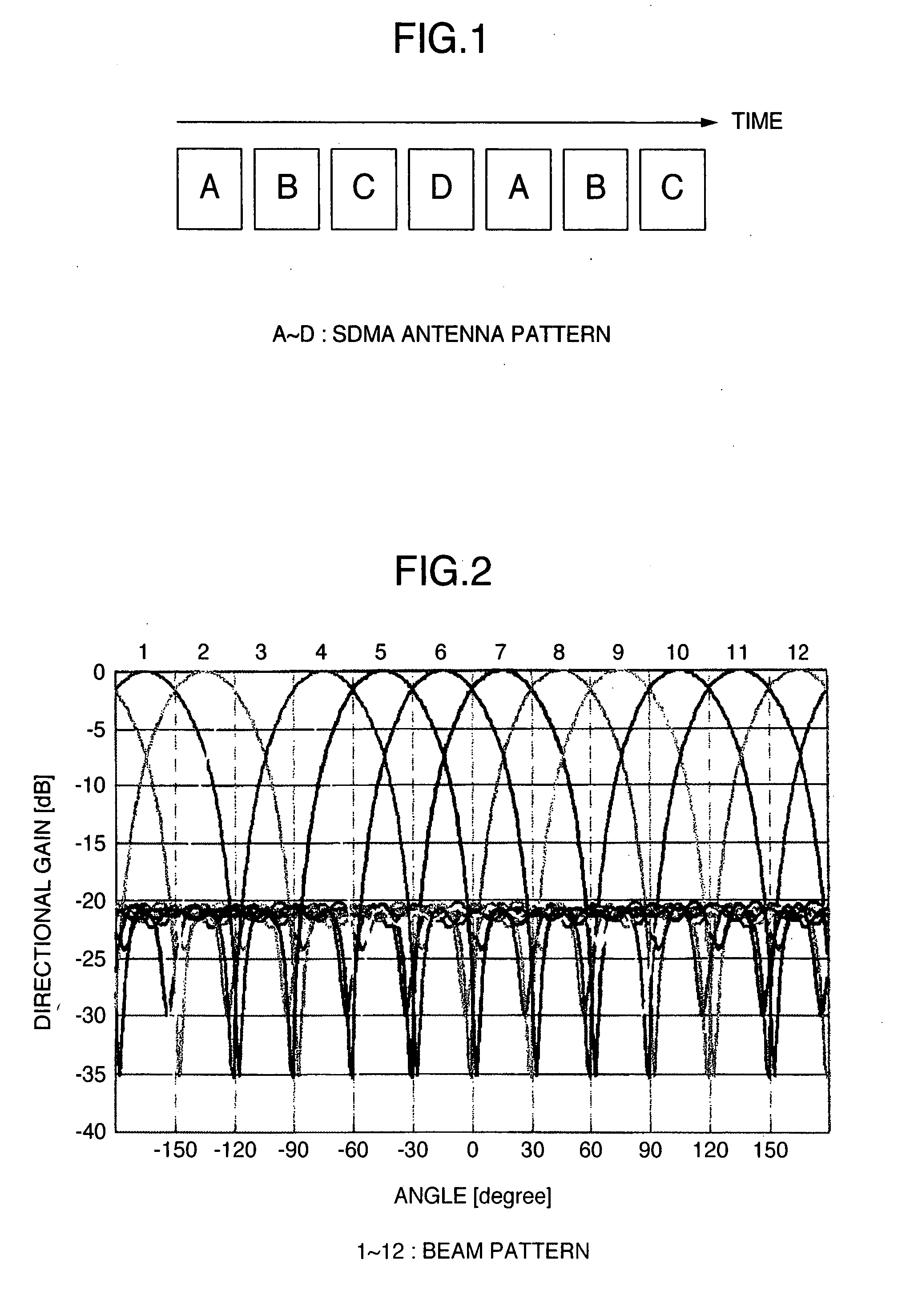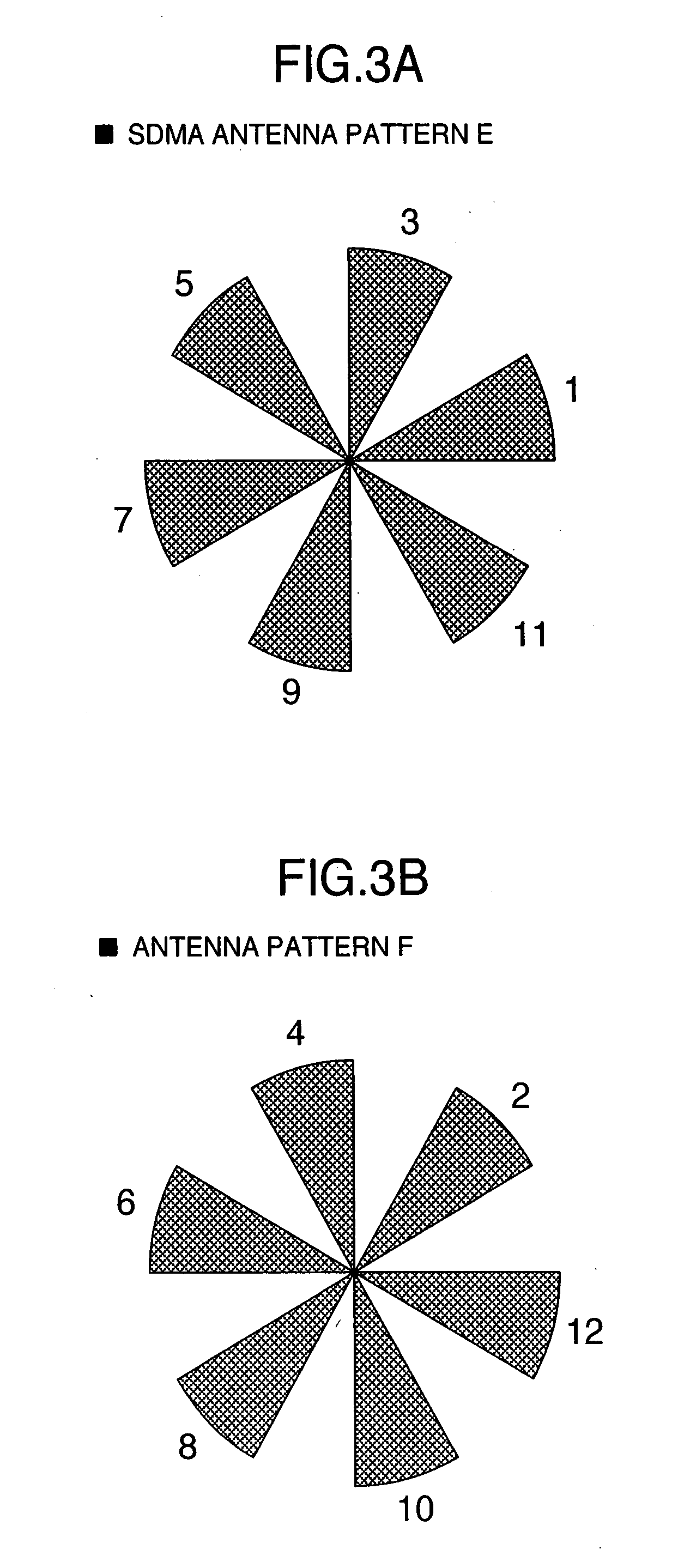Radio communication method and radio base transmission station
a radio communication and radio base technology, applied in the field ofsignal transmission methods, can solve the problems of difficult to estimate the down link line information from the up link line information, especially in the fdd system, and achieve the effect of difficult adaptive array processing and difficult to estimate the down link line information
- Summary
- Abstract
- Description
- Claims
- Application Information
AI Technical Summary
Benefits of technology
Problems solved by technology
Method used
Image
Examples
first embodiment
[0042]The first embodiment will be explained through an example of the system simultaneously transmitting six beams shown in FIG. 3A and FIG. 3B.
[0043]FIG. 3A shows an antenna pattern E (1, 3, 5, 7, 9, 11) simultaneously transmitting a signal to six users and FIG. 3 B shows an antenna pattern F (2, 4, 6, 8, 10, 12) also transmitting a signal simultaneously to six users. Antenna patterns between adjacent cells are arranged, for example, as shown in FIG. 8. FIG. 8 shows hexagonal cells representing service areas of the respective base transmission stations. A base transmission station is arranged at the center of each hexagonal area. There is shown a cell named “d” in the center of the figure. In the cell, “EEEEFFFF” is written. This indicates the correspondence between the frequency and the antenna pattern. The leftmost first E represents an antenna pattern E of the lowest frequency. The next frequency band is also E pattern. Four E patters appear continuously and then F pattern appe...
second embodiment
[0065]Referring to FIG. 9, explanation will be given on a This embodiment uses four antenna patterns as shown in FIG. 4A to FIG. 4D.
[0066]When the four antenna patterns of FIG. 4A to FIG. 4D are compared to one another, the antenna pattern A of FIG. 4A and the antenna pattern C of FIG. 4C have opposite beam directions, indicating a high orthogonality on the spatial axis. Moreover, the same holds true with the antenna pattern B of FIG. 4B and the antenna pattern D of FIG. 4D. Conversely, when the antenna pattern A is compared to the antenna pattern B, for example, beams 1 and 2 are in the adjacent directions and there is a possibility that the side lobes may overlap with the main lobes mutually and hence it can not necessarily be said that the orthogonality is high. This means that when the antenna pattern A and the antenna pattern B are in a pair, the both antenna patterns may give interfere to a certain terminal with a high possibility. In other words, when the antenna pattern A o...
PUM
 Login to View More
Login to View More Abstract
Description
Claims
Application Information
 Login to View More
Login to View More - R&D
- Intellectual Property
- Life Sciences
- Materials
- Tech Scout
- Unparalleled Data Quality
- Higher Quality Content
- 60% Fewer Hallucinations
Browse by: Latest US Patents, China's latest patents, Technical Efficacy Thesaurus, Application Domain, Technology Topic, Popular Technical Reports.
© 2025 PatSnap. All rights reserved.Legal|Privacy policy|Modern Slavery Act Transparency Statement|Sitemap|About US| Contact US: help@patsnap.com



